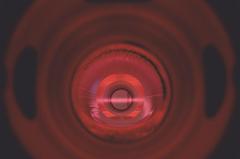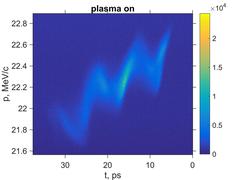URL: https://www.desy.de/news/news_search/index_eng.html
Breadcrumb Navigation
DESY News: Electron beams that chop themselves
News
News from the DESY research centre
Electron beams that chop themselves
In a multi-national effort a team of researchers from DESY, the Lawrence Berkeley National Laboratory (LBNL) and other institutes have demonstrated a remarkable feature of self-organisation in a particle beam that can be of great use for a future generation of compact accelerators: Using the high quality electron beam at DESY’s PITZ facility, the scientists could show that long electron bunches can chop themselves into a row of shorter bunches when they fly through a cloud of electrically charged gas, called a plasma. At the same time the electrons' energies were seen to be modulated along each bunch. These results are the experimental proof of a novel plasma acceleration concept pursued by the AWAKE (Advanced Wakefield Experiment) collaboration at the European particle physics lab CERN in Geneva. The team led by DESY scientist Matthias Groß presents its findings in the journal Physical Review Letters.

View through the plasma cell along the flight path of the electron beam. Visible in the middle is the pink glow of the plasma. Credit: DESY, Johannes Engel
To accelerate an electron bunch in this way the plasma electrons are separated from the plasma molecules, forming a so-called plasma wakefield that creates an immense accelerating field. The separation of electrons and molecules in the plasma can be achieved through a high-energy bunch of charged particles. Using proton bunches is very attractive since sufficient energy can be stored in a proton beam to drive a plasma accelerator and generate electron bunches with energies in the LHC regime of tera-electronvolts (TeV) in a single stage. The AWAKE experiment is hosted by CERN to investigate this promising scheme. However, proton bunches as they are generated in today’s accelerators are much too long to be useful in plasma accelerators. Therefore, the generation of suitable proton bunches from a conventional accelerator is a key issue for the AWAKE setup.

A self-modulated electron bunch. Credit: DESY
”The breakthrough results described in our manuscript can be scaled directly to the proton regime and thus open the path to validate the self-modulation scheme towards the next-generation of high-energy physics accelerators at CERN,” emphasises main author Matthias Groß. “Our positive results show that the self-modulation can be practically used in experiments and that unwanted effects like beam hosing, which tend to destroy particle bunches, can be kept under control. This experimental data has been eagerly anticipated in the plasma wakefield accelerator community, especially by the AWAKE collaboration, for several years. The presented achievement is a further example where a plasma wakefield theory based prediction is directly validated in experiment. And looking ahead, our special cross shaped plasma cell which was utilized to gain these results may be of great interest to other groups working on beam-driven plasma wakefield acceleration as well.”
Reference:
Observation of the self-modulation instability via time-resolved measurements; M. Gross, J. Engel, J. Good, H. Huck, I. Isaev, G. Koss, M. Krasilnikov, O. Lishilin, G. Loisch, Y. Renier, T. Rublack, F. Stephan, R. Brinkmann, A. Martinez de la Ossa, J. Osterhoff, D. Malyutin, D. Richter, T. Mehrling, M. Khojoyan, C. B. Schroeder, and F. Grüner; Physical Review Letters, 2018; 10.1103/PhysRevLett.120.144802



